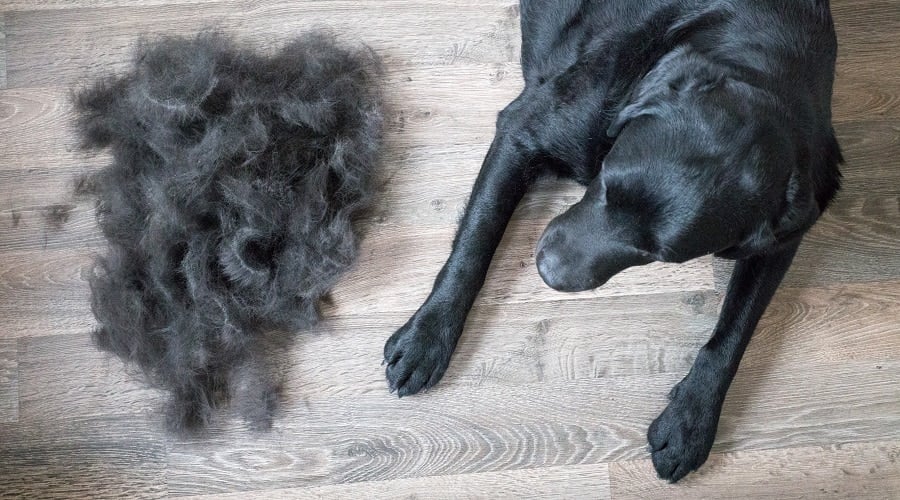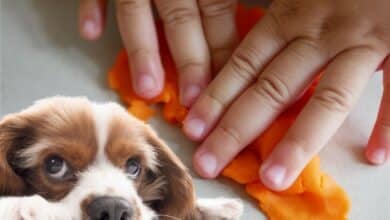Yikes! My Dog Just Ate Plastic Wrap! What Should I Do?
When you purchase through links on our site, we may earn a commission. Here’s how it works.
Our dogs love eating things that they shouldn’t, and it can cause us a lot of worry in the process. It doesn’t matter if it’s a piece of fruit that’s toxic, or a piece of bone, our canine companions love to eat things that can land them at the vet’s office. So what happens when your dog eats some plastic wrap that’s covering a leftover piece of food?
Unfortunately, eating plastic wrap can have serious consequences for our furry friends. This is particularly true if a large amount has been eaten or if the tasty treat inside it wasn’t safe as a doggy snack. You’ll want to take action quickly, and there are some steps you’ll need to take, including calling your veterinarian.
In urgent situations like this, it’s always important to try to remain calm. Read on to find out more about what to do in this scenario, and what you can expect after contacting your local vet.
Table of Contents
Why Is Plastic Wrap Bad For Dogs?
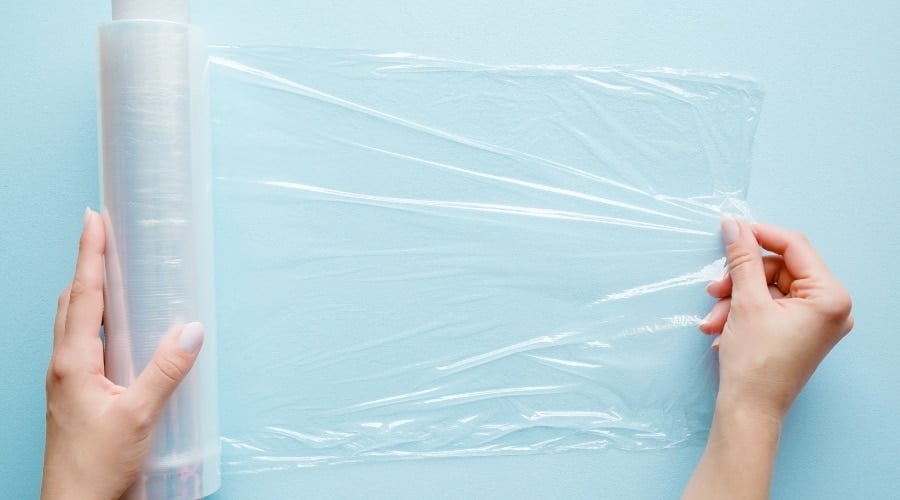
Plastic wrap, sometimes known as cling film or saran wrap, is a man-made material made up of a type of plastic called PVC (polyvinylchloride). It’s a familiar household item, normally found on a roll. It’s see-through, slightly stretchy, and found in most kitchens.
It is often used to cover foods to keep them fresh and ready to eat, perhaps wrapped around a sandwich or stretched over a bowl. This is why it’s also so attractive for our dogs. They smell the goodies inside them, and it’s hard for our canine companions to resist. Cling wrap is difficult to recycle and so, is often found in trash cans and sometimes as litter on walks.
Is Cling Wrap Toxic?
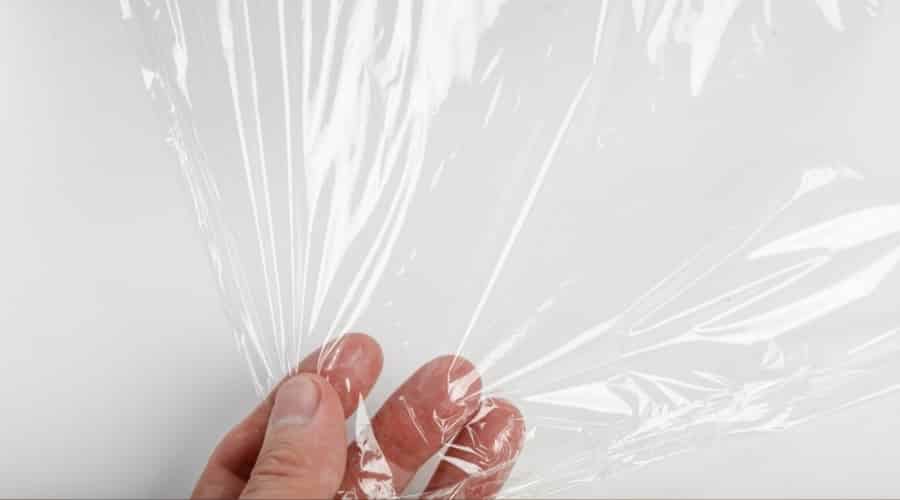
Plastic wrap isn’t toxic to dogs, but their digestive system cannot digest it, so it may become a problem if it gets stuck. Because it is difficult to digest, it is called a ‘foreign object’ or ‘foreign body.’
Small strips are likely to pass through their gut, but large amounts can be a cause for concern and cause a blockage. Although uncommon, there are also other associated risks with cling wrap consumption, such as mouth injuries, choking, and stomach perforations. If your dog is choking, you need to call your vet immediately.
If cling wrap has been consumed, it is usually because something tasty was wrapped inside. Make sure your pup hasn’t ingested anything toxic within the wrapping, such as chocolate, avocado, or grapes. Many foods that are harmless to us can be very poisonous to our dogs, so ring your vet straight away if Fido has eaten anything toxic.
My Dog Just Ate Cling Wrap. What Now?
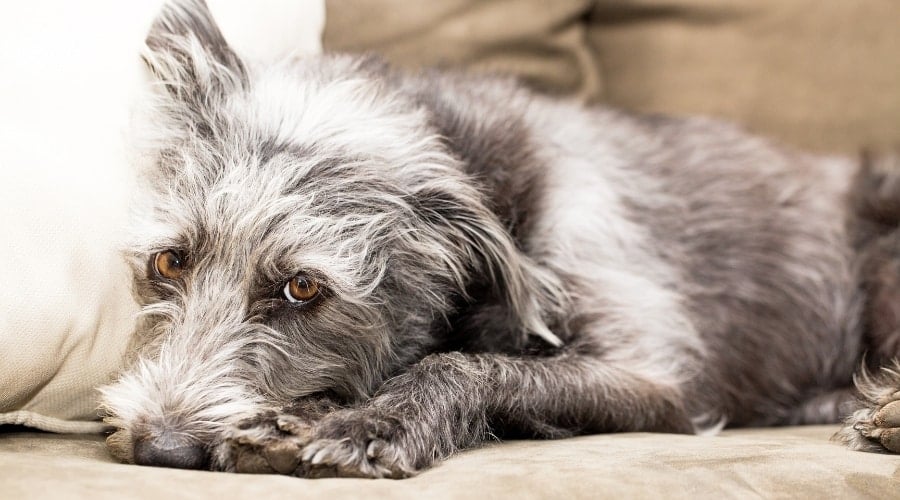
If your dog just ingested cling wrap while you weren’t looking, there are a few steps you’ll want to take right away. This can help minimize potential impacts, and get your canine companion on the right track to feeling better. Let’s take a look.
Step 1: Check For Any Signs Of Distress
The most important thing to do once you have realized your dog has consumed saran wrap is to check he is not choking. The following symptoms can be signs of choking. If you see any of these symptoms, take them to the emergency vet straight away:
- Not breathing (apnoea) or being unresponsive
- Struggling to breathe
- Looking distressed, pawing at the face
- Coughing
- Pale or blue-tinged gums
- Collapsed
Step 2: Clean Up And Make An Assessment
Clean up any debris your naughty pup hasn’t managed to eat so that other pets aren’t in danger too. If you can, try to estimate how much cling wrap your dog has eaten and make a note of the timing. This could help your veterinarian out if you need to pay them a visit later on.
Step 3: Call Your Veterinarian
You should ring your veterinarian once you’ve realized your dog has eaten plastic wrap. The wrap may be small enough to travel through their digestive system and out in his poo; however, it is always recommended to check with a vet. You’ll need to provide their breed and weight, as well as how much cling film you think was ingested.
Step 4: Monitor Your Pup
If you’ve spoken to your veterinarian and have decided to monitor your pup at home in the hope he passes the foreign body in his poop, make sure you follow the vet’s instructions very carefully.
Make sure to update your veterinarian on any changes. It is not unusual for your pup to have a bit of an upset tummy for a day or so. You may be able to see some cling wrap in your dog’s poop over the next few days.
Another treatment option your veterinarian may offer to you is to induce vomiting. This means Fido will throw up the foreign body before it can do any damage if the pieces were too large to pass through. You mustn’t try and make your pup vomit at home by yourself. This should only be done by a veterinarian. Attempting it yourselves can cause more harm than good!
Step 5: What To Watch For
If you are waiting to see if a small amount of wrap passes through in your dog’s poop keep an eye on them. Call your veterinarian as soon as possible if you spot any of these signs:
- Tired/lethargic
- Lack of appetite
- Pale pink gums
- Diarrhea or loose poop
- Constipation or inability to poop
- Vomiting
- Straining to poop or smaller amounts than usual of poop
- Signs of stomach pain – looking uncomfortable, restless, change of behavior
Large pieces of cling wrap could become stuck in your pup’s gut. This can cause a blockage (intestinal obstruction) in your dog’s digestive system, which could be life-threatening and is classed as an emergency. This should be seen by your veterinarian straight away.
What Will My Veterinarian Do?

The medical treatment received from your veterinarian will vary depending on lots of factors, such as what signs are showing, how much plastic was eaten, and the location of any blockages.
Your vet may want to carry out some imaging to see what’s going on inside your pup. Some examples of imaging include x-ray and ultrasound. Specialized x-rays may be taken which use a dye, which helps the veterinarian to locate where a blockage may be located.
Don’t be alarmed if your veterinarian wishes to take blood and urine samples, as this could be to assess the general health of your pet and to rule out other illnesses or complications.
If the plastic wrap gets stuck in the throat, esophagus, or stomach, a vet may choose to use a specialized bit of equipment called an endoscope to pull it out, essentially like a grabber. If it has moved beyond the stomach into your dog’s guts, your veterinarian is more likely to operate to remove it.
Abdominal Surgery For Foreign Bodies
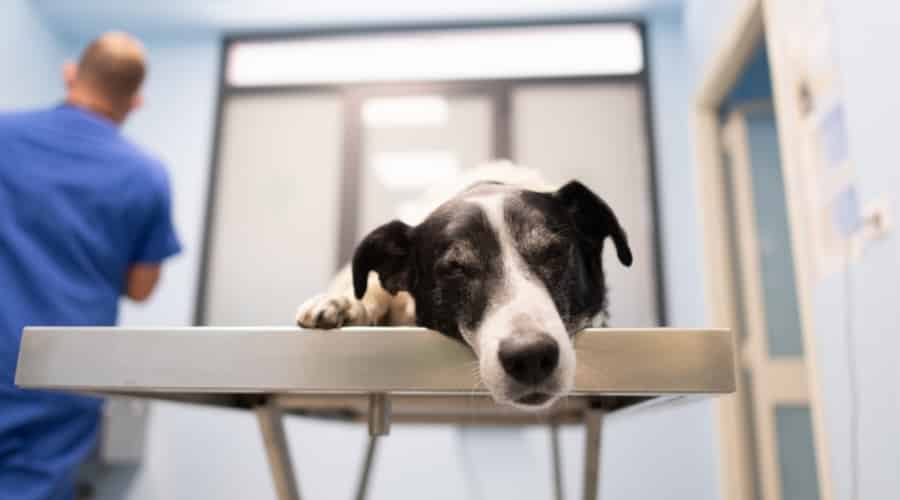
If your dog is suffering from a blockage in his guts, he may have to have surgery to fix this. This means he will have to go under anesthesia. He will be put onto his back, and an incision will be made into his abdomen (tummy) and then into the gut.
Once they’ve located the saran wrap, your vet will remove it. He may have to stay at the veterinary practice for a few days until he is feeling better. Foreign object removal in the esophagus (gullet) or the stomach can be more complicated. There are risks associated with surgery, as with any procedure. One study found that 7.6% of dogs developed a narrowing of their intestine (stricture) after foreign body removal surgery.
Will My Dog Be Okay?
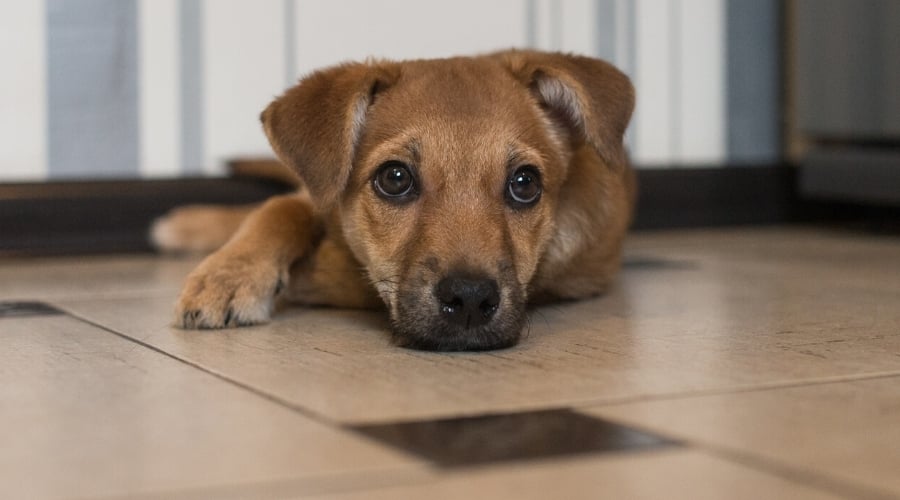
Your vet may talk to you about a prognosis, which is a prediction for how long they think it will take for your dog to get better. It will depend on the location of the plastic wrap, how long ago the plastic has been inside your dog, and the overall health of your pet.
It is really important to be aware of complications that could arise. Complications could include a bacterial infection at the site of damage and inflammation of the stomach or gut lining. Blockages can cause your dog’s guts to become necrotic or die when they aren’t treated promptly. Necrotic guts are extremely dangerous and often fatal.
Preventing Foreign Body Ingestion
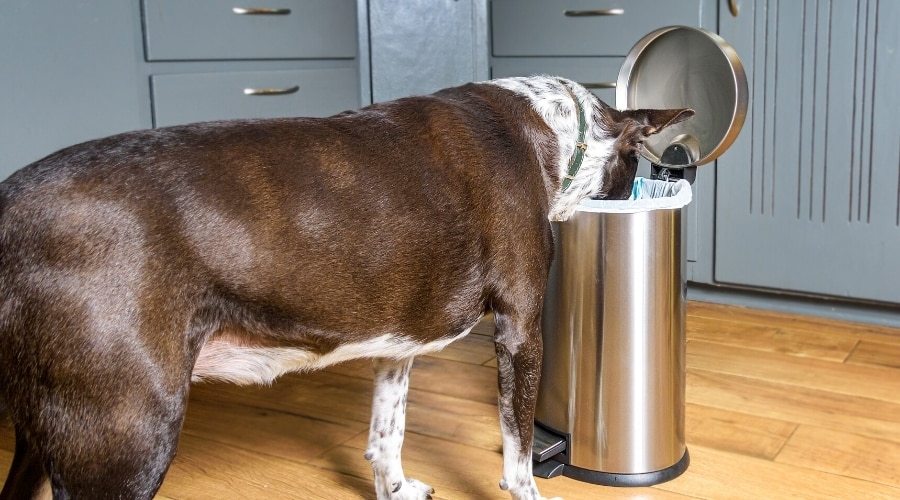
As eating plastic wrap can cause serious complications for our pups, we should always try and keep our pets away from it. This is easier said than done, as our dogs always love to keep us on our toes!
Try to always keep all foreign bodies out of reach. Your dog probably won’t be interested in eating it on its own, but once it is wrapped in food and smells delicious, it will become more enticing. This makes trash an easy target for our pets. Make sure it goes straight into a secure pet-safe trash can, out of reach or hidden away.
On walks, if your dog likes eating naughty things, keep him on a long lead so you have more control. You could try training classes or even a basket muzzle if he keeps picking things up.
Frequently Asked Questions
How long will it take for my dog to pass plastic wrap?
This will vary on the amount swallowed but anywhere between 24 to 72hrs. However, if the item is too large to pass through, then this can cause a blockage (intestinal obstruction).
Can my dog’s stomach acid digest plastic wrap?
No, plastic wrap will not dissolve in your dog’s stomach acid. Sometimes the plastic wrap will travel through your dog and pass in your dog’s poop, but it can also get stuck in your dog’s guts and cause blockages. This will require surgery by a veterinarian to remove.
Why has my dog eaten plastic wrap?
Plastic wrap may smell enticing because it has been wrapped in something tasty, making your dog more likely to want to eat it. Sometimes dogs eat inedible items due to a lack of the right nutrition or enrichment. Make sure your dog is eating a complete commercial diet. You could try walking your dog more, playing more games with him, or giving him more attention to see if this helps to stop him from eating things.
Are any dogs more at risk after ingesting cling wrap?
Intestinal obstructions can occur in dogs of any breed or age, although smaller breed dogs and puppies are more likely to develop problems as their guts are narrower than the guts of their larger counterparts. Young dogs are also more prone to problems, as they generally haven’t learned not to eat things they shouldn’t!
Final Thoughts
Plastic wrap and cling film can be dangerous to dogs, but it depends on how much they’ve eaten and the size of your dog. Dogs are more likely to eat it if it’s wrapped around tasty food. Try to keep items up high and away from dogs, at all times.
If your dog has consumed a toxic or poisonous snack, then this can also cause problems. The best guidance to be safe is to always contact your vet first, before doing anything else. They will be able to best advise you on your individual situation. Once you’ve followed your vet’s advice, Fido will likely be on the mend in no time.
